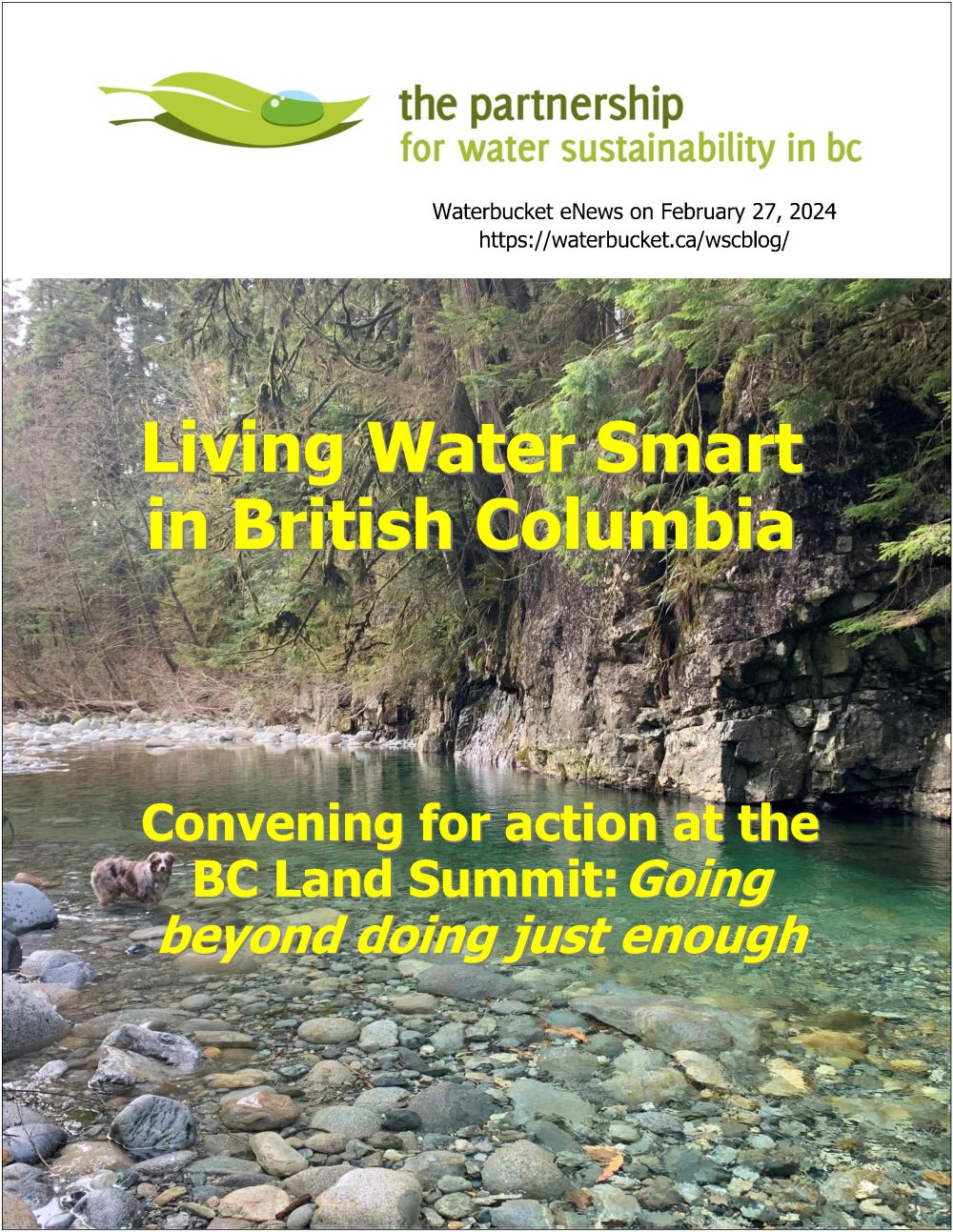CONVENING FOR ACTION AT THE 2024 BC LAND SUMMIT: “EAP, the Ecological Accounting Process, is an expression of Blue Ecology. Both are all about a restorative framework and mindset,” stated Richard Boase, career environmental champion within local government
Note to Reader:
Published by the Partnership for Water Sustainability in British Columbia, Waterbucket eNews celebrates the leadership of individuals and organizations who are guided by the Living Water Smart vision. The edition published published on February 27, 2024 featured Richard Boase, co-lead for the Partnership’s program component at the 2024 BC Land Summit, a once every five years event. The summit is a platform for the call for a mindset change to affect an attitude shift that results in restorative development.
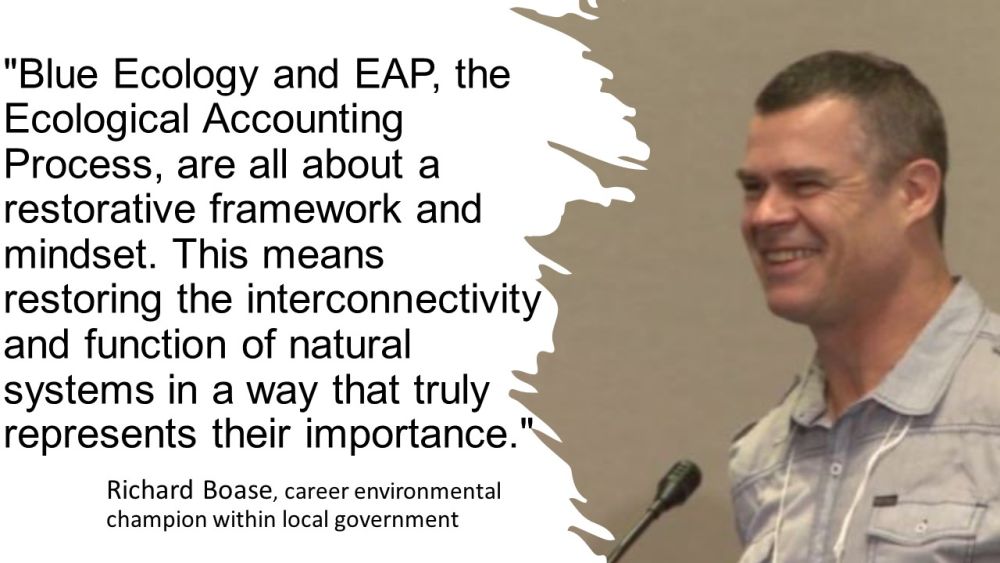
Richard Boase has a passion for applied research involving natural systems
Richard Boase’s career in local government with North Vancouver District is defined by the partnerships he continues to forge with academia, and by his stalwart support of the Partnership. The District could always be counted upon to be a proving ground for the application of innovative tools and approaches.
An environmental champion in word and deed, Richard’s career history is one of stepping up, having the courage of his convictions, and leading by example to demonstrate how to apply “science-based understanding” that would protect or enhance stream systems in the built environment.
We must do a better job of protecting streams:
“I am in a position now to reflect on this because I believe I have earned that right over the course of a 30-year career,” says Richard Boase.
“Given how much I have seen, done and been exposed to in my local government career, it is fair for me to reflect on what has happened and comment on why local governments have not been as successful as we would have wanted.”
“But we must focus on the path forward. The Partnership will be there, ready to support those who are now coming to their own realization, that there are some desperately needed re-thinks in terms of the way communities transact business, especially in the southwest portion of BC where the urban landscape is changing so rapidly.”
The 2024 BC Land Summit will happen in May in Nanaimo. This 3-day event held once every five years may spark innovation and collaboration, by providing valuable insights about the use and conservation of land and water.

EDITOR’S PERSPECTIVE / CONTEXT FOR BUSY READER
“The 2024 BC Land Summit potentially represents a seminal moment in what the Partnership anticipates will be an “awakening process” leading to a fundamental attitude change about use and conservation of both land and water in British Columbia. With an attitude change, anything is possible,” stated Kim Stephens, Waterbucket eNews Editor and Partnership Executive Director.
“The summit audience is comprised largely of players involved in some form of land-related profession…land appraisal, real estate, land planning, agrology, landscape architecture.”
“Our 2-part session at the BC Land Summit is about ‘making Blue Ecology real’ through examples that will inspire our audiences to do better because they see the relevance in their day jobs; and because they recognize that there is still work to be done when they go home at the end of each day.”
“Part of what we wish to accomplish with this story featuring Richard Boase is to heighten anticipation for the Blue Ecology session at the BC Land Summit,” concludes Kim Stephens.
Blue Ecology: Compass for an attitude change
“Think of Blue Ecology as a compass in terms of how it relates to a water-first approach to Water Reconciliation between cultures,” urges Richard Boase. “The compass points the way forward and to success.”
“EAP is an expression of Blue Ecology and provides local governments with a tool that presents financial evidence supporting the benefits of investment in riparian natural environments.”
“Because of the diversity in backgrounds, skills and experiences that we have in the Partnership, we are positioned to take what Michael Blackstock has created with the Blue Ecology framework and make it actionable in the local government sector.”
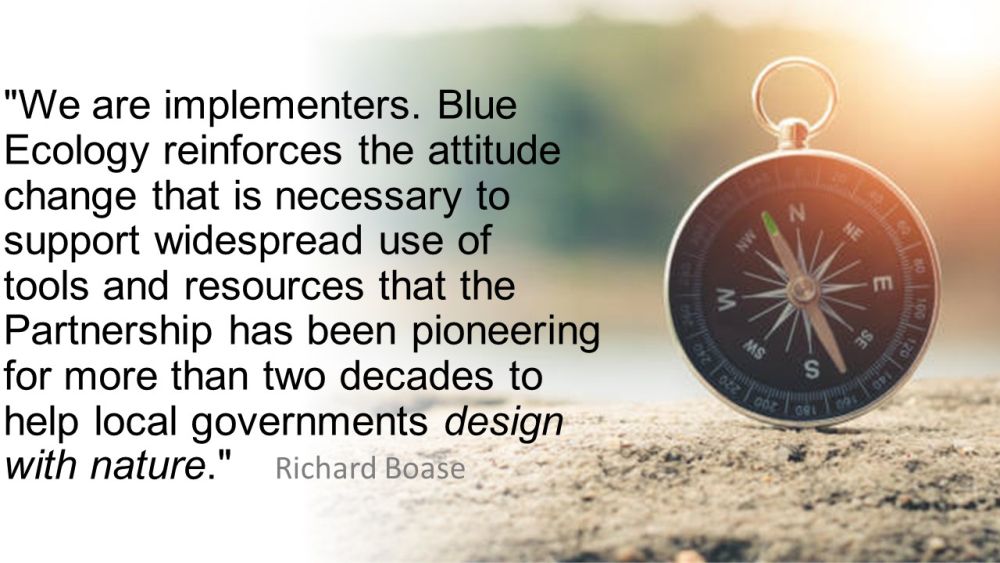
STORY BEHIND THE STORY: Convening for action at BC Land Summit – extracts from a conversation with Richard Boase about going beyond doing just enough
“At the BC Land Summit, Paul Chapman and I will tag-team to present the local government and stewardship sector perspectives, respectively. He and I are working from different directions to bring about an attitude shift, one that is rooted in a mindset change,” says Richard Boase.
“What brings us together are our leadership roles on the Watershed Moments team combined with our shared commitment to advancing Blue Ecology as a new way of doing business.”
“We have both been at this a long time. From experience, we have seen and know why the situation on the land has not been changing for the better. Our call for restorative action is this: design in concert with nature and make better decisions around our landscapes.”

The summit is a platform for the call for a mindset change to affect an attitude shift
“Paul Chapman and I are excited about tag-teaming because Blue Ecology is a culture-bridging framework for viewing water differently. At the summit, we will illustrate why the need for THE RE-THINK is of pressing urgency. “
“Our land ethic has consequences for water and the land it runs through. Atmospheric rivers and droughts, the situation is dire. The water balance is out of balance. Time is of the essence. The clock is ticking and there is no more time to waste.”
“At the summit, we will shine the spotlight on examples of policies and tools that enable local governments to implement a restorative approach. Science, applied research and experience underpin WHY WE ARE SO POSITIVE in terms of our philosophy that we can turn things around.”
What might you do differently?
“After seeding restorative ideas for designing with nature, Paul Chapman and I will engage our summit audience in a mini-townhall session. Reflect on what you could have done differently on past projects, we will urge them, and then tell us, what might you do differently on upcoming projects.”
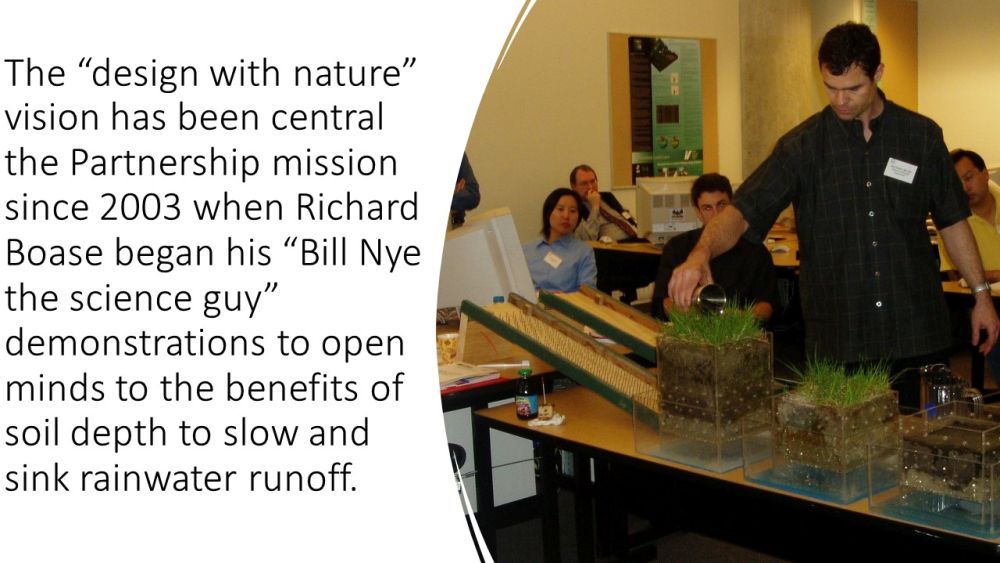
Blue Ecology offers a restorative path forward for healing the land
“The Partnership embraced Ian McHarg’s design with nature philosophy more than 20 years ago. It became the branding for our outreach and continuing education program in the 2000s.”
“Blue Ecology is the next evolution and provides us with a made in BC framework for interweaving Indigenous knowledge and Western science. The Partnership’s job is to explain how this framework can be applied in so many different ways, resulting in a much more restorative based mindset.”
“So many professionals and stewardship groups are almost at a desperation stage right now. Everything is happening so fast. We are being bombarded with doom and gloom.”

Communities cannot engineer their way out of the development dilemma
“In 2019, restorative development guru Storm Cunningham delivered two public lectures when we held the Parksville Symposium, the second in the Watershed Moments Series. Storm provided us with a thoughtful perspective when he said, we don’t fully understand complex systems, so humility and adaptive management are needed to restore nature, and to revitalize cities. This context also informs our path forward.”
“We have talked forever about how engineering our way out of these problems is going to be more complicated, more expensive, and result in all kinds of future financial liabilities in many areas that have not been accounted for on the ledger. Whereas, if we re-think our approach and the tools nature has given us, let’s maximize the use of these first.”
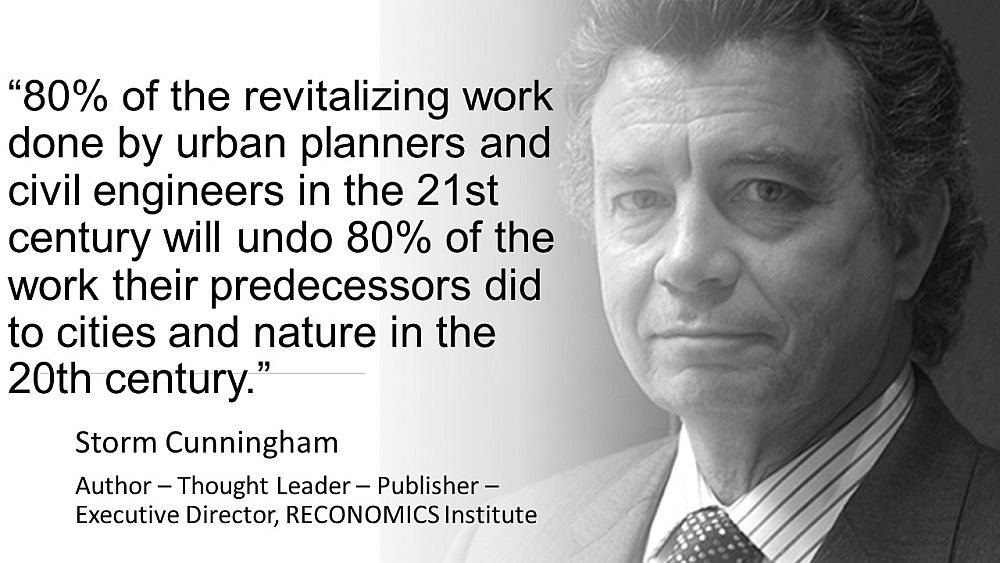
Once you understand how rainfall on the land reaches streams….
“The way the Partnership does business, we always say the glass is half-full. And this positive way of thinking is rooted in my beliefs and experience. My faith that we can turn things around comes back to the research that Jim Dumont pioneered in looking at the hydrology of land use change and what we learned from the Hoskins Creek case study in North Vancouver.”
“Turning the situation around is SIMPLE when you understand hydrology. And when you understand the kinds of changes needed in development practices, and the differences they would make, property to neighhourhood to watershed. We are saying there is a way of designing communities and making decisions differently so that you can be restorative in nature within the urban development context.”
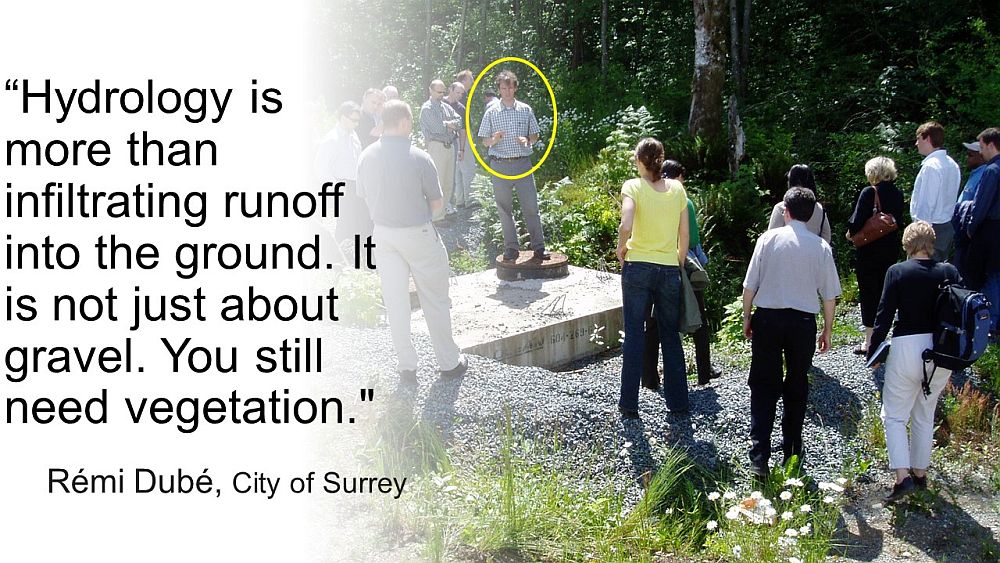
Communities have a history of missed opportunities to do it right
“On the flip side…and this is truly upsetting…we knew more than 20 years ago what we needed to do when designing residential communities, but local governments generally failed to act on science-based understanding.”
“After 20 years, the wholesale uptake of green infrastructure, low impact, nature-based hydrological design on single-family residential properties in the entire Metro Vancouver region is not widespread at all.”

“The only places where I truly see green infrastructure being used to slow and sink rainwater runoff are in new greenfield developments. Whereas, in existing single family neighbourhoods, there is very little restorative green infrastructure in place. That is the missed opportunity.”
“And it is because of competing interests…the land is so valuable, the cost is so high, we must have new homes with suites. And we bury these suites in basements because the FSR (floor space ratio) does not count.”
“All of these things together have trumped any desire to say, we are going to add some extra costs to make things hydrologically restorative whenever redevelopment happens. No local government is immune to competing interests.”

Designing with nature really does matter
“The irony is that in southwest BC, where land is scarce and the demand for housing so great, REDEVELOPMENT IS THE OPPORTUNITY to do it right by applying science-based understanding and designing with nature.”
“For the past 20 years, the Partnership has been on the leading edge of applied research and communication of science-based understanding. To date, however, the pattern in communities has been one of missed opportunity after missed opportunity. Instead of cumulative benefits, it has been cumulative impacts.”
“Despite having made some progress during this period, local governments are stalled at a critical moment when designing with nature matters if communities are to become water-resilient,” concludes Richard Boase.
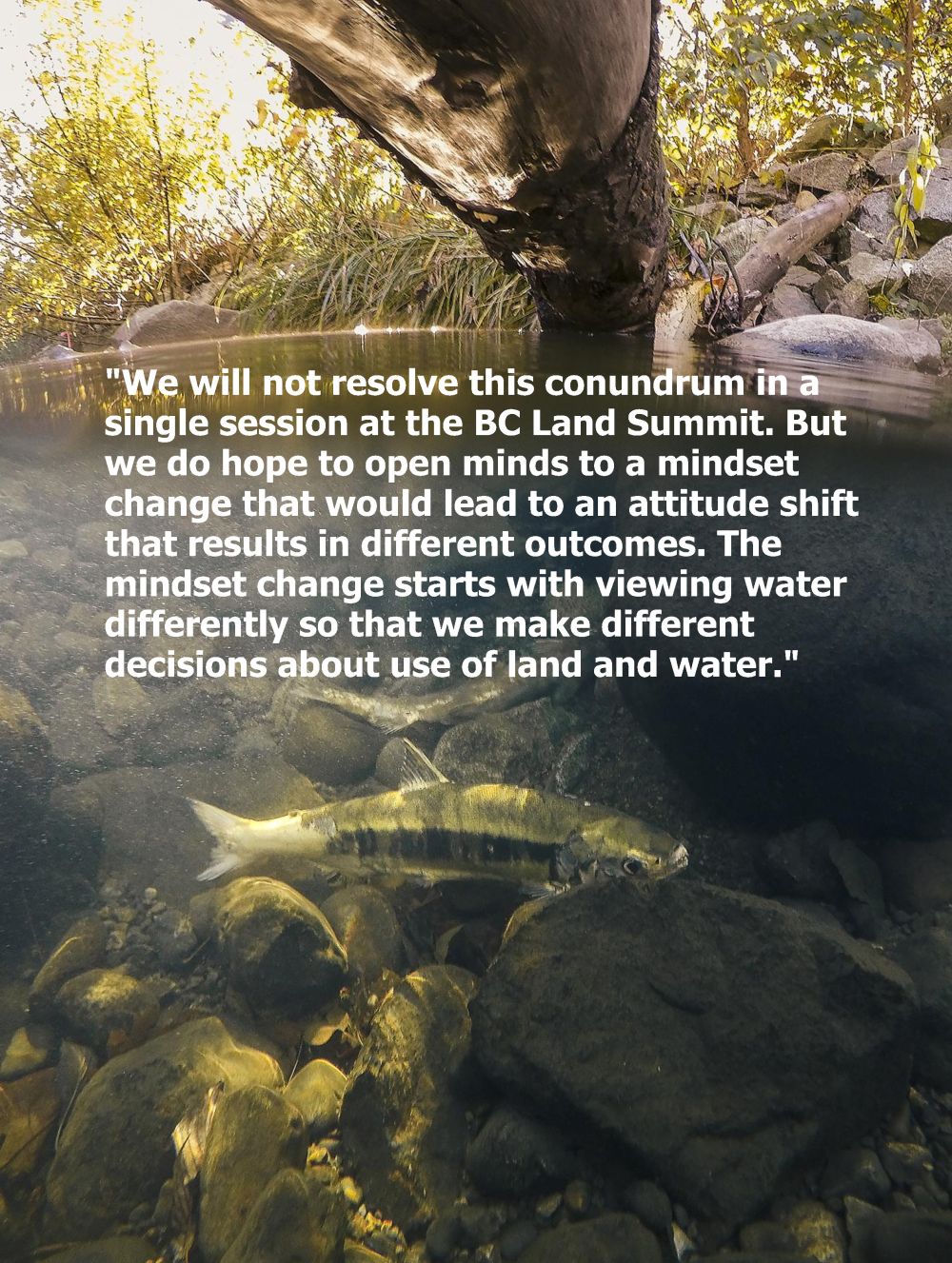
Living Water Smart in British Columbia Series
To download a copy of the foregoing resource as a PDF document for your records and/or sharing, click on Living Water Smart in British Columbia: Convening for action at BC Land Summit – Going beyond doing just enough.
DOWNLOAD A COPY: https://waterbucket.ca/wcp/wp-content/uploads/sites/6/2024/02/PWSBC_Living-Water-Smart_Richard-Boase-and-BC-Land-Summit_2024.pdf


